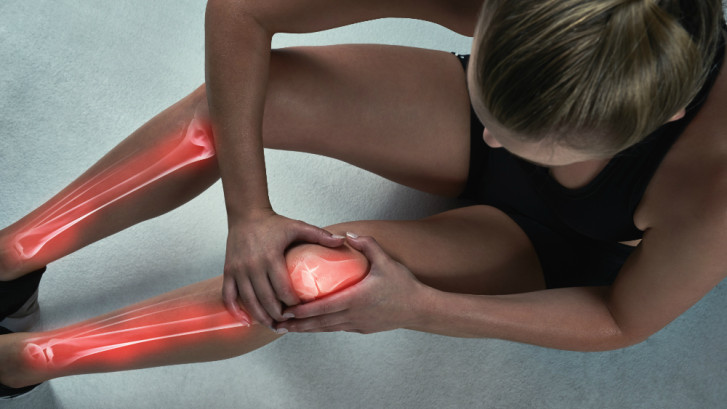Useful information on IT Band Pain and Relief
Are you an avid runner, hiker, or just athletic?
Then listen up! You just might want to know about Iliotibial Band Syndrome (IT Band Syndrome) and how to avoid it.
The Iliotibial (IT) band is a tendon located at the hip and is attached to your gluteal muscles. The IT band runs down the outside of the thigh muscle, and into the shin. The IT band attaches across your knee, which helps stabilize the joint and helps with mobility.
Top five causes of IT Band Syndrome:
- Overuse – Most of the time, IT Band Syndrome is an overuse injury. For instance, if you religiously run and attempt to run faster for a longer distance without slowly building up, you may have an IT band flare-up. If that’s the case, you will possibly have to change your training regime.
- Tight Muscles – Remember, stretching is important! Since all of the muscles and tendons are connected, it is very crucial that you stretch properly.
- Weak Muscles – The muscle in your hips can contribute to IT Band Syndrome if they are weak. The reasoning is that when you have weak hip muscles your form will not be ideal. For instance, weak hip muscles will cause you to run differently, which adds stress to your IT Band and knees.
- Poor Form – Maintaining proper form is essential when performing physical activity, such as running, lifting, and stretching. For example, if you overextend your strides when running you may add stress to you knees. By not having proper form you add stress to your knees and this can lead to IT band Syndrome.
- Shoe or Orthotic Issues – Sometimes the problem lies with your footwear or how your foot meets the ground. Over worn shoes can cause the your feet to land in an awkward angle, which creates quite a bit of stress up to your knee and hip. It is important to manage the mileage that a shoe has accumulated. It is also important that you adjust your running or walking based on the type of shoe that you are wearing. When it comes to an arch or ankle problem, you may want to look into obtaining orthotics as they will help you perform your activity with proper gait.
Often, a diagnosis can be made by the patient’s description of the symptoms.
Symptoms may include:
- Consistent achiness, burning or tenderness of the outer knee.
- Knee pain that radiates up and down the outside of your leg.
- Stinging pain or needle pin-prickling.
- Warmth and redness on the outside of your knee.
- Pain every time the heel strikes the ground.
- Disabling pain.
- Feeling a click, pop, or snap on the outside of your knee.
However, a physical examination will also be performed, so that the physician can examine and feel for any swelling of the knee and to determine whether it is tender. Additionally, the physician will look for any leg length discrepancy, muscle imbalances and tightness in the legs and back. Usually, the physician will notice tenderness on the outer thigh just above the knee joint. Additional diagnostic studies may include, but not be limited to, an MRI.
How is IT Band Syndrome treated?
A physical therapist can help zone in on the problem and help provide specific stretches that focus on flexibility. An ultrasound may be performed to ensure that there are not any underlying issues. The physician can also evaluate the underlying cause, such as recommending orthotics or observing the way you run, walk, or cycle. The physician can administer a corticosteroid to decrease inflammation. Lastly, there is a surgical option, which is reserved for patients that have exhausted the conservative treatment. Surgery is always a last resort.
Yet it is important to note that most of the time treatment is simple and can be done at home:
- Rest
- Avoid activities that trigger the pain
- Stretching or use of a foam roller
- Massage of the affected area.
- Over-the-counter anti-inflammatory pain relievers
- Elevation of the leg
- Ice pack (Wrap an ice pack in a towel, and place it on the outside of your knee for 10-15 minutes at a time.)
However, you should seek medical help if the symptoms become worse or do not clear up. Also, be sure to note that over the counter medication can have potential side effects and if you have question or concerns it is best to speak to your physician. A medical provider can assist you with concerns and direct you to a physical therapist who can alleviate your pain.
For more information, or if you wish to schedule an examination, request an appointment today!
Medically Review by Dr. Roman Shulze
For additional information about IT Band syndrome contact Healthpointe. If you have questions, give us a call at 888-719-8448. At Healthpointe, we are passionate about health, mindfulness, prevention, and helping you live your healthiest life. Walk in to any of the Healthpointe medical offices, such as the Long Beach Office near Signal Hill, Carson, Seal Beach, Lakewood, Bellflower, Compton, Hawaiian Gardens, and Los Alamitos.

